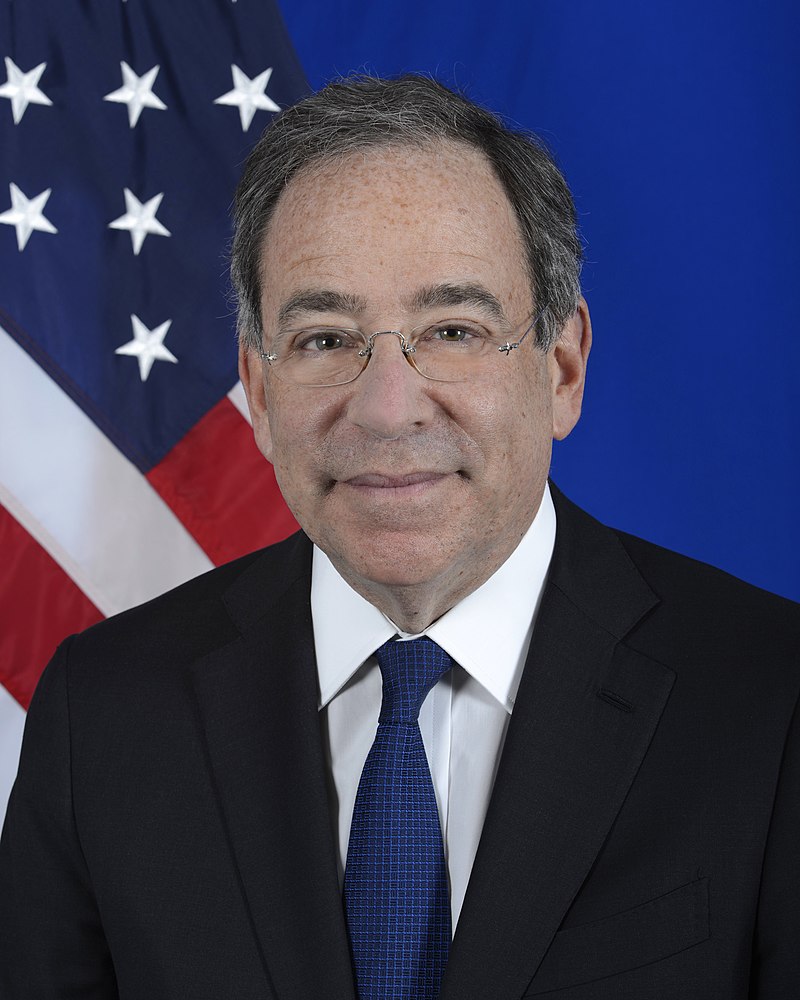John Taylor: “The optimal point for euro credit is the crossover zone between IG and HY”
| For Beatriz Zúñiga | 0 Comentarios

In the opinion of John Taylor, European fixed income expert at AllianceBernstein, it is an interesting time for this asset. With the recent market events and falling levels that we had only seen during the global financial crisis, investors have taken a step back. In this interview, the expert has shared his view on fixed income and which fixed income assets are the most attractive in the current market environment.
Given how we ended and how we started the year in the fixed income market, what role is it destined to play in investors’ portfolios this year?
Fixed Income is an interesting one. With recent market events and drawdown levels many of us have only seen during the global financial crisis, investors have taken a step back. This is perfectly understandable when we consider how strong the exposure in the region has historically been in the asset class. Our European Income portfolio is something that indeed does seem appealing for medium to long term investors. It is often neglected that although the recovery in public markets happens over an extended period, it is individual days or weeks that make up this recovery
What impact will it have on fixed income assets if the ECB does not lower interest rates as fast as the market expects? Which fixed income assets could benefit from this scenario, and which ones would be hurt the most?
When growth forecasts are below trend, it doesn’t take much for a technical recession to occur. Our base case is for a soft landing which does incorporate a chance of a very shallow recession driven by Germany. However, a factor often overlooked is that real wage growth is likely to be positive this year which should underpin some resilience in consumer spending.
Markets are broadly pricing in a soft landing, with the ECB and other central banks likely to lower rates to the perceived “neutral rate” over the next 1-2 years. A so called soft landing is likely good for both duration and risk assets. However, if the probability of recession increases in the coming quarters then duration will continue to perform because central banks would lower rates into easy territory whilst risk assets will start to underperform due to corporate profitability concerns.
Why do you think that this is a good time to enter European fixed income?
Policy easing should help euro and UK sovereign bonds, while fundamental, technical and valuation factors are all supportive for euro credit markets.
From stubbornly high inflation through economic and geopolitical storms, 2023 brought a challenging backdrop for European bond investors. But as we approach 2024, we see attractive opportunities ahead.
In the last year, duration was key to fixed income investing (as there was a clear preference for short durations), but what about durations now? Is it worthwhile to remain positioned for short durations?
With the era of negative rates behind us, euro government 10-year AAA bonds offer positive yields of almost 3%, creating scope for yields to fall and prices to rise meaningfully. If economic growth should disappoint or a shock should cause equity and credit markets to fall, euro and UK sovereign bonds look set to perform well.
The main worries for euro and UK treasury markets are mounting fiscal deficits leading to excess government bond supply and higher inflation risk premiums. These global pressures point to likely steepening at the long end of the euro and UK curves, where such factors tend to have most impact, and where we think investors should be underweight.
Currently both the UK and euro government yield curves are abnormally flat, and their long ends could steepen sharply as they return to more normal levels. The spread between short and very long–dated bond yields is currently around 20 bps in Germany and 43 bps in the UK, compared with 12-year averages of around 105 bps. We prefer UK and Euro government bonds with less than five years to maturity, which will likely be the most responsive to rate cuts and the least sensitive to the longer-term factors driving long-dated treasuries.
Several countries at the EU’s periphery have improved their credit ratings lately. While the recent Moody’s upgrade has boosted Italian government bond prices, we think Italy has more work to do to keep up with peers.
UK gilts look cheap relative to German Bunds, and we expect the yield gap between them will continue to narrow. The twin benefits of higher yields and some spread tightening would give UK gilts scope to perform well over the next six to 12 months.
You mentioned in one of your insights that investment grade credit is a good place to be positioned. What advantages does this asset class offer right now?
We see the sweet spot for euro credit as the crossover zone between investment grade and high yield: BBB and BB-rated bonds. While more risk-averse investors will prefer BBB, our research shows that historically an allocation to BB has generated additional returns through the cycle in all but the worst default scenarios, with euro BBs outperforming BBBs over time by around 2% per year. Of course, euro BBB returns have been more stable. But on a risk-adjusted basis, BB still has an edge. European credit fundamentals look encouraging. Corporate balance sheets started the tightening phase in good shape, and higher rates are feeding through only gradually to corporate costs. We expect euro and UK default rates will rise but stay relatively low at 3%–4% over 2024.
On the other hand, however, many experts are warning about the risks of high yield, what is your view on this asset class? Are defaults expected to increase?
Technical factors are also supportive across European credit markets, particularly for euro high yield. The market has shrunk by almost 15% since 2021, owing to both recent maturities and a net €10 billion of upgraded credits migrating out of high yield to investment grade.
The remaining euro high-yield market is skewed 64% to BB—which is currently the segment investors favor. Around 7% of the market will mature in 2024, but we think strong demand should readily absorb any new higher-quality supply.
In terms of current yields, valuations look supportive too. Euro BBB investment-grade bonds are yielding 5%—the same as the lowest-rated CCC bonds in 2017. And in euro high yield, a starting yield of 7.25% provides a substantial cushion against downside risks. Adjusting for interest-rate sensitivity, yields would need to increase by over 250 bps to wipe out that high income and produce negative returns. And to underperform sovereign bonds, spreads would need to widen from the current 483 bps by over 150 bps.
In your opinion, which sectors or types of companies are the most appropriate to hold a fixed income exposure?
Banks are in a strong position to absorb losses from bad loans and securities, have strong ongoing earnings capacity (as seen in earnings releases) and have created loanloss reserves. Capital ratios remain high, and non-performing loans (NPLs) are near all-time lows. Deposits are more diversified than in regional banks, enabling larger banks to benefit from a “flight to quality” by depositors. We expect credit metrics to weaken somewhat from their highs as growth declines, but not to the extent that would trigger ratings downgrades. We expect capital adequacy ratios to decrease to medium-term targets, and NPLs to move toward “through the cycle” levels. Overall, we see banks as well positioned to absorb credit losses as they come through, given their strong starting position. Also, given these banks’ systemic importance, we believe that regulators would provide support in the event of financial distress, as they did in March.
Outside of financials, our largest industry weights are in consumer cyclicals and communications. We focus on companies with improved balance sheets and liquidity profiles. Within consumer cyclicals, we focus on higher-quality bonds. We prefer businesses that should be more resilient during the current environment (like autos or local leisure issuers that can benefit from increased local versus international travel as growth slows). Additionally, communications companies may be better insulated from the economic slowdown. When looking at new additions, we tend to focus on consumer non-cyclicals and other more defensive sectors.
Within GBP credit, the positioning across sectors is diversified with the largest exposure in communications. We are selective in the names we hold, preferring those where we feel comfortable underwriting through cycles. Our positions are in issuers who have global revenue streams—meaning those in more defensive sectors or those that our research indicates can withstand the current macro backdrop but offer compelling valuations. The GBP credit offers a spread pickup over EUR credit for comparable risk.









